- Flowers
Flower Bulbs Allium Bulbs Anemones Begonia Tubers Crocus Bulbs Daffodil Bulbs Dahlia Tubers Hyacinth Bulbs Lily Bulbs Tulip Bulbs Woodland Flower Bulbs Other Flower BulbsFlower Plants Annual Bedding Plants Children's Flower Plants Clematis Climbing Plants Cottage Garden Plants Exotic Plants Flowers For Cutting Plants Foliage Plants Greenhouse & Indoor Plants Ground Cover Plants Hanging Basket Plants Lavender PlantsHardy Geraniums Herbaceous Border Plants Heuchera Pansies and Violas Patio Plants Water Plants Window Box Plants Winter Bedding Plants Hydrangea Large impact plants Recommended By Our Experts
- Fruit & Vegetables
- Trees, Shrubs & Ornamentals
- House Plants
- Tool Shed
Garden Tools & Equipment Barrows and Trolleys Garden Solutions Harvesting Plant Supports Seed Sowing Tree Stakes Water Butts Weed Control Hand Tools Secateurs, Snips and Pruners WorkshopGarden Irrigation & Watering Irrigation Kits Water Butts Hoses & Sprays Miscellaneous Fertilisers Plant Pots Hanging Baskets Plant Protection Garden Compost All Compost
- Outdoor Living
Garden Living Barbecues & Firepits Garden Storage Solar Lights & Lighting Fixtures & Ornaments Awnings Sail Shades Garden Clocks Landscaping Lawn Edging PavingPatio Heaters Gas Patio Heaters Electric Patio Heaters Fire Pits, Chimeneas, Fire Baskets Wallmounted/Ceiling Patio Heaters Freestanding/Table Top Patio Heaters Water Features Solar Powered Water Features Mains Powered Water Features Indoor Water Features Outdoor Water FeaturesGarden Furniture Rattan Furniture Parasols Garden Benches Dining Sets Loungers Wooden Furniture Party Tents & Gazebos
- Wild Birds
- Gardening Info
- Special Offers
- • Nitrogen (N) is needed for healthy leaf growth.
- • Phosphorus (P) is needed for healthy root and shoot growth.
- • Potassium (K) is needed for flowering, fruiting and general hardiness.
Join Our Gardening ClubVan Meuwen Gardening Club
Become a Member
Join our Gardening Club to unlock exciting perks and discounts!
JUST £10 for one year's membership
10% OFF EVERY order placed online £20 worth of Van Meuwen Vouchers Exclusive members only deals Join NowHow to use fertilisers
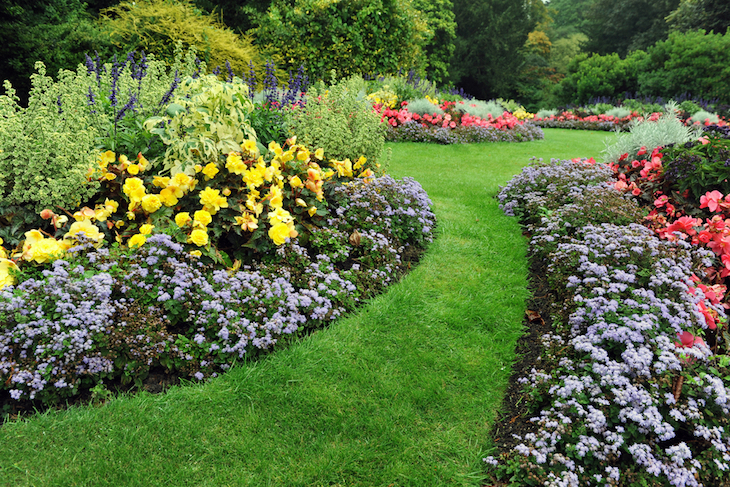
The right fertiliser will do wonders for your blooms
Image: ShutterstockPlants grow best when they have the right nutrients. Fertilisers help plants grow quicker, produce better yields, and generate more beautiful blooms.
But with so many types available, knowing which one to pick can be confusing. Here you'll find everything you need to know about fertilisers so you can get the most out of your plants.What is fertiliser?
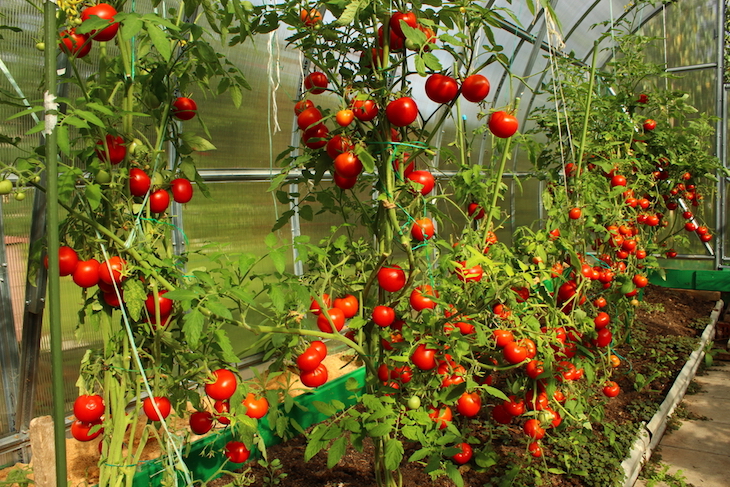
High-potassium fertilisers encourage tomato plants to flower and fruit
Image: KingarionFertiliser is a material added to soil to supply plants with essential nutrients. Fertilisers contain one or more of the three main plant nutrients: nitrogen, phosphorus, or potassium. Each of these nutrients performs a different role:
Every bag of fertiliser will show you an N:P:K ratio. This lets you know how much of each of the main three elements you're getting. A balanced plant fertiliser contains these nutrients in equal proportions (e.g. 20:20:20) and is a good all-round choice.
Some fertilisers are tailored to different plants. For example, tomato fertilisers will be high in potassium to encourage flowering and fruiting, while lawn fertilisers are high in nitrogen for leafy growth.Why use fertiliser?
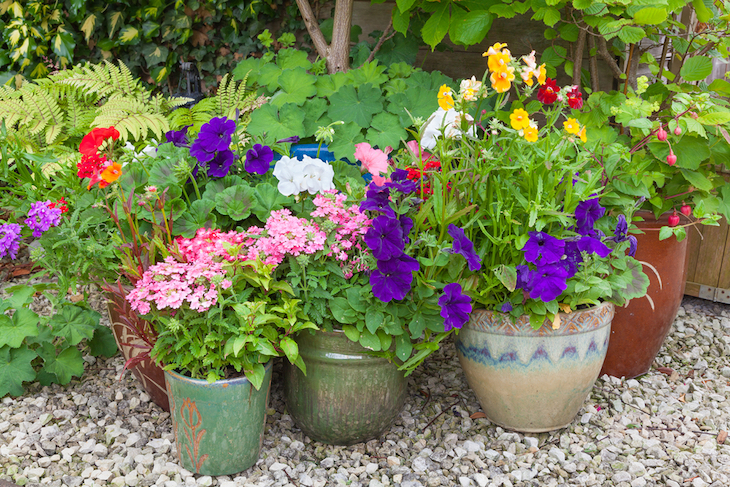
Container plants can only get essential nutrients from fertiliser
Image: PhotoiconixA good garden soil contains most of the nutrients your plants need. However, some soils are nutritionally poor and need improving with fertilisers. Plants grown in containers will always need extra help from fertilisers to get all the nutrients they require.
Fertilisers are a great way to supplement your plants and will result in stronger, more prolific growing. Fertilisers are also used to tackle nutrient deficiency in plants that are yellowing or discoloured.Different types of fertiliser
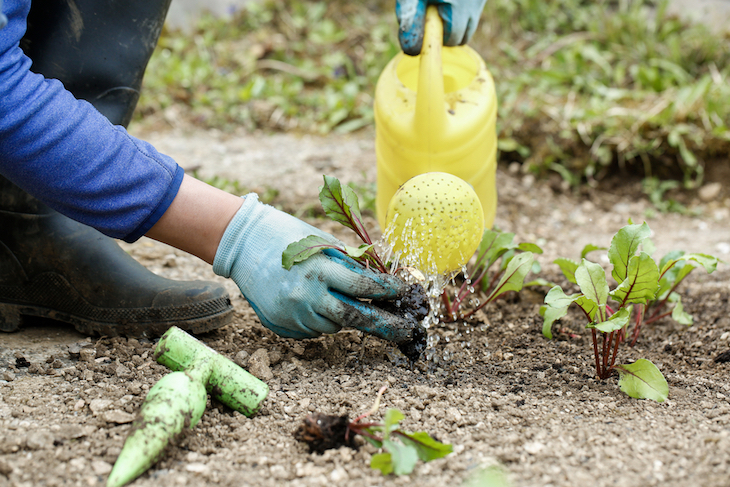
Liquid fertilisers give plants a quick boost
Image: ShutterstockThere are several different types of fertiliser:
Inorganic fertilisers are man-made. These fertilisers are concentrated and fast-acting.
Organic fertilisers are made from natural, biodegradable materials such as animal manure; fish, blood and bone; and seaweed. They are slower acting than inorganic fertilisers.
Granular fertilisers are a dry, solid form of fertiliser. You either add them to the soil at planting time or scatter them on the soil surface around the base of mature plants. Controlled or slow-release fertilisers deliver nutrients to the soil over several months. This makes them perfect for container plants.
Liquid fertilisers come as water-soluble powders or concentrated liquids that you mix with water to create a fertiliser solution. Using a watering can or sprayer, you'll need to add liquid fertiliser every couple of weeks. Plants can absorb the nutrients from liquid fertilisers quickly, so use them to give plants a boost in the growing season.
Well-rotted manure and compost are not fertilisers, but they too perform an important role in keeping your soil healthy. Adding them to your soil every year improves your soil?s structure, creating spaces for air and water. This makes nutrients in the soil more available to plants and improves your soil?s ability to hold onto water.How to use fertiliser
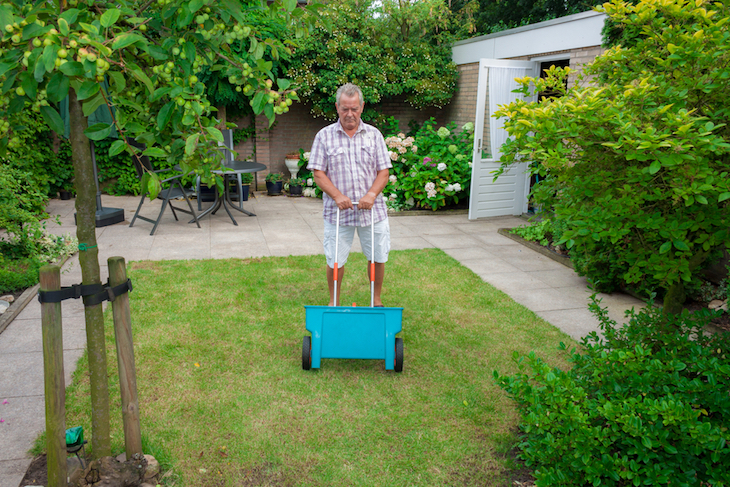
Broadcasting with a drop spreader is a great way to fertilise your lawn
Image: zlikovecHow you apply your fertiliser will depend on the product you're using and the type of plant you're feeding.
Broadcast application enables you to cover large areas with fertiliser. Use a hand-held spreader or drop spreader to apply granular fertiliser to big areas like your lawn or beds.
Base application adds fertiliser to the soil or potting compost before you sow or plant into it. This is a good method for container plants and veg.
Top dressing adds fast-acting fertilisers to the surface of your soil to stimulate growth. This suits established plants like perennials and shrubs. Be careful to avoid contact with leaves as these fertilisers will scorch.
Watering on means watering liquid or soluble fertilisers onto your plants roots for a quick boost during the growing season. This method is mainly used for feeding greenhouse crops, container plants and bedding. Again, avoid contact with leaves to prevent scorching.
Foliar feeding is adding diluted fertiliser solution to the leaves of plants to provide speedy supplementary feeding. Young leaves and tender undersides of leaves will absorb the most. Never foliar feed in bright sunlight as you could scorch foliage.When to use fertiliser
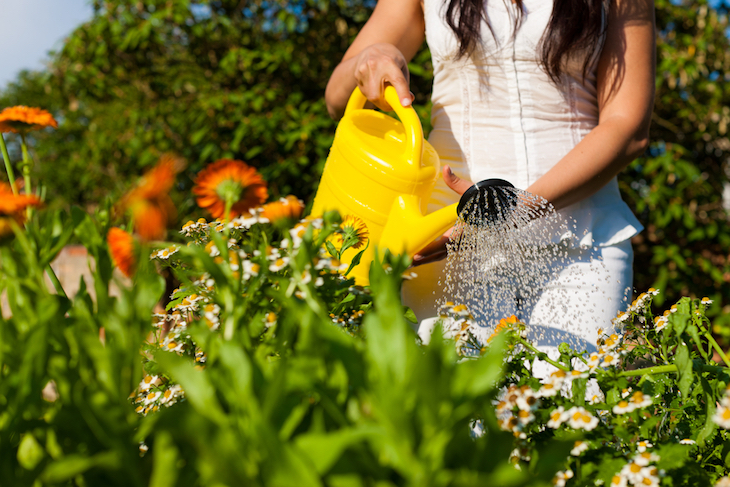
Make sure you use fertiliser when your plants are in active growth
Image: KzenonIt's best to apply fertiliser when your plants are in active growth between spring and early autumn. Use slow-release fertilisers once in the spring, to keep plants fed throughout the summer. Liquid fertilisers provide a quick fix but don't last as long; you'll need to use these every few weeks.
Some fertilisers have specific recommendations; for example, you should only start using tomato fertiliser once the plant has started flowering and setting fruit. Always read all instructions carefully before use.
For even more information, check out our 'How to use fertiliser' video below:We hope this guide has given you all the information you need to keep your plants happy and healthy. Whichever fertiliser you choose, make sure you follow the instructions on the packet.
Quick Links:
Sign up to the Van Meuwen Gardener's Club for Special Offers
Delivery Information Privacy Policy Cookies Terms of Business Affiliate Programme Planting & Cultural Advice Contact Us© 2025 Van Meuwen. All rights reserved. A division of Branded Garden Products Limited.
- House Plants
